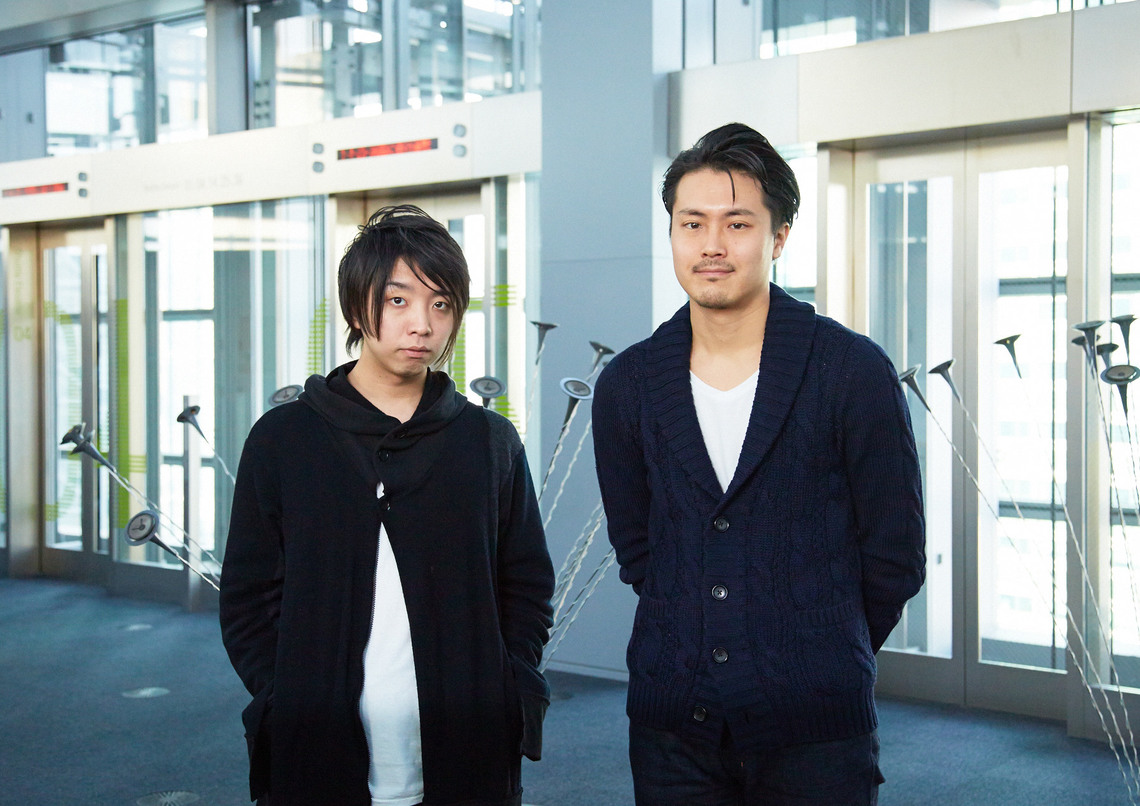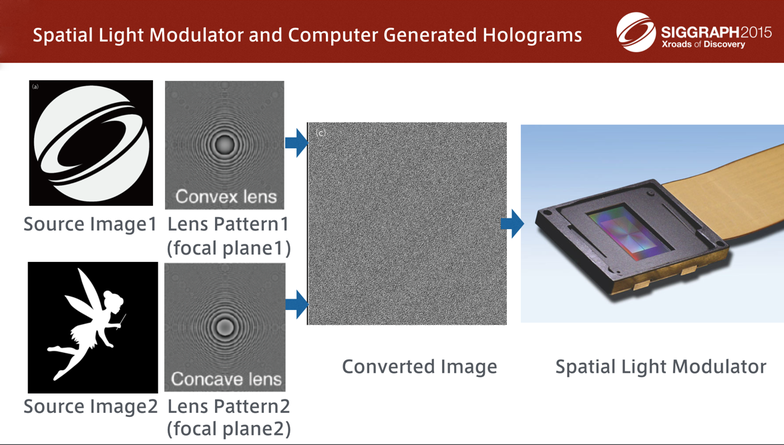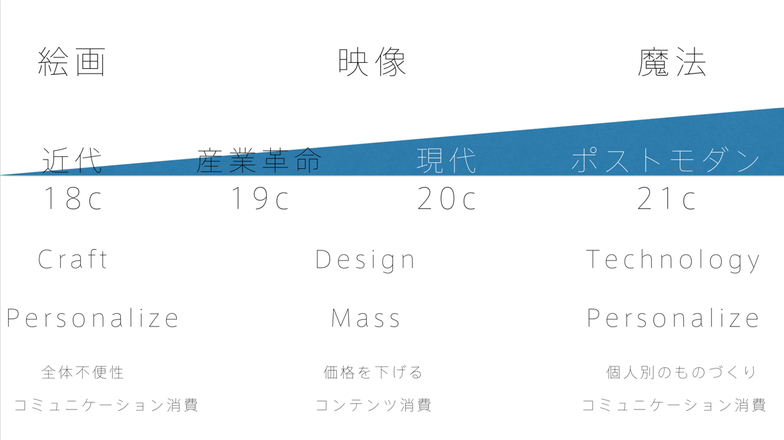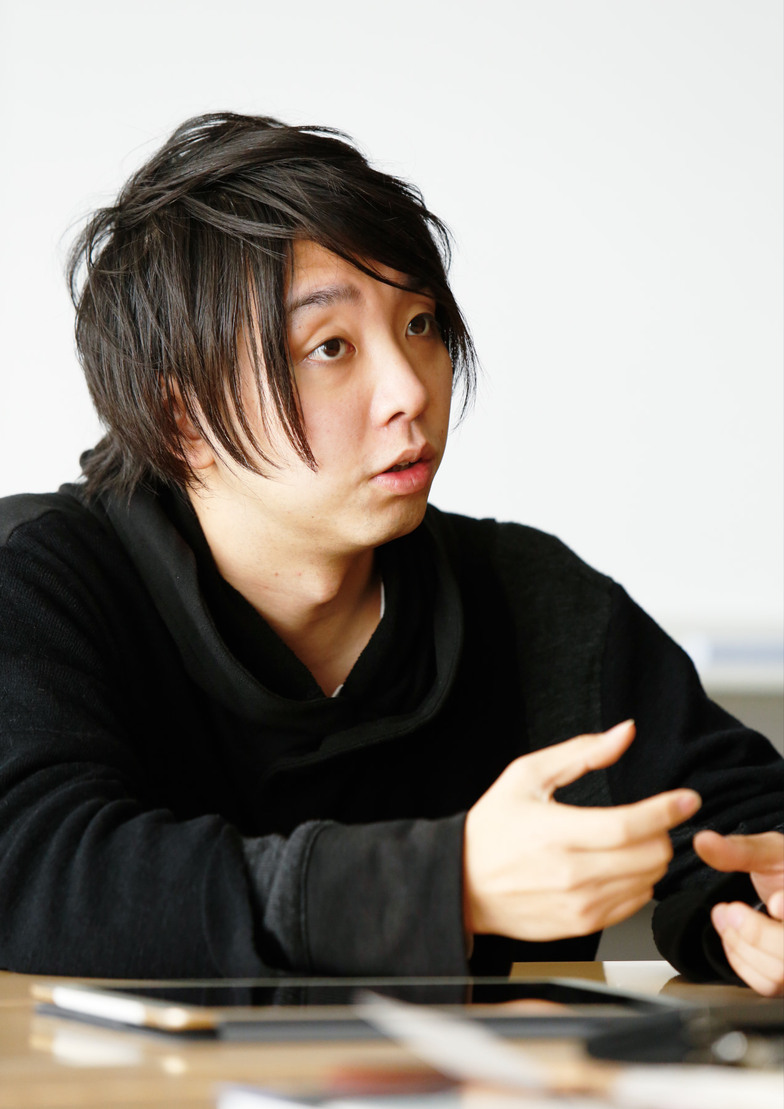"Going to Meet the People I Want to Meet!" Part 2: Takuya Fujita of Dentsu Inc. Event & Space Design Bureau met with Yoichi Ochiai, an Assistant Professor at the University of Tsukuba who is active as a media artist and researches various technologies. In his recent book, The Century of Magic, he argues that we are moving from the "Century of Images," where people share reality through media, to the "Century of Magic," where media itself becomes seamlessly integrated into the environment. What is the future vision of Professor Ochiai, often called a modern magician?
Interview & Editing: Aki Kanahara, Dentsu Inc. Event & Space Design Bureau

(From left) Mr. Ochiai, Mr. Fujita
The fundamental meaning of three-dimensional imaging is the disappearance of the barrier between objects and images
Fujita: The world of advertising and communication is also in a transitional phase—or rather, I feel it's shifting precisely as Mr. Ochiai describes in his book, from the "century of images" to the "century of magic." That's why I requested this time today to hear from Mr. Ochiai and gain some insights.
What are you primarily researching these days?
Ochiai: Lately, I've been solely focused on extensions of holograms. The holograms I work with are true holograms, using the recording and reproduction of phase and intensity. Since conventional projectors are two-dimensional, roughly 90% of what's called holograms in the world aren't actually holograms. And I also act as a "hologram police officer," working on how to eradicate the 90% of people using the "non-hologram" kind (laughs).
What I'm working on is how to control waves three-dimensionally to match the target. Simply put, with a regular projector, when it's in focus, the same image appears along the light path, right? But to form an image three-dimensionally, for example, if you shine a beam from one side, normally the same image should appear. However, if you use two beams and define that this phase produces this image and that phase produces that image, you can form the light three-dimensionally.
Using this kind of technology, for example, if you create a hologram with sound, you can manipulate something with a tangible sense of substance. How to gather forces or light propagation in three dimensions is my current theme. When people hear "hologram," they only imagine images floating in mid-air.
Fujita: Right. Like Star Wars.
Ochiai: The essential meaning of three-dimensional imaging isn't about projecting objects into the air. It's about lowering the barrier between objects and images, enabling three-dimensional imaging of both objects and waves. That's what I've been pursuing all along. To explain what I'm doing in a broader sense, including holograms, the term "media art" fits.
When did computer usage start evolving like this? Mark Weiser wrote a paper in 1991 called "The Computer for the 21st Century." He said, "In the future, with highly developed wireless and infrared networks, people will compute using screens, paper, or tablets without consciously thinking about the digital devices themselves."
Twenty-five years later, we're precisely in that era. Essentially, in computer research, the focus of what you pursue is crucial. What I initially chose was how to break through the limitations imposed by human resolution for vision and hearing. The eye is limited to 60 Hz; in terms of resolution, 4K or 8K is thought to be sufficient. The ear can only hear up to 22.1 kHz.
Screens are two-dimensional, so to truly handle three-dimensional things, we need holographic wavefront synthesis and much greater intensity. Currently, we only have microwatt-level output, so it's still very weak energy-wise. But if we can generate stronger energy and increase temporal and spatial resolution, we could draw pictures in mid-air or move objects freely. Both use light and sound, so they're similar to what TVs do, but I find it fascinating that they exhibit more material-like behavior.
Fujita: It feels like human life is about to take a step up to the next level.
Ochiai: It's almost certain that computers will evolve toward materiality. As for when such multimedia developments will emerge in society, they come faster the more money you invest. I say it comes faster the more you invest. Visual media has been centered around TV-like image infrastructure for about 40 years, so figuring out how to create something different from that is a really interesting challenge.
Creating Tactile Sensation with Sound and Light
Ochiai: Lately, we've been working on "creating tactile sensations with light."
Fujita: So you can touch Tinker Bell?

Ochiai: Tinker Bell is half visual, half tactile, but lately I've been working on "how to create Braille in mid-air." It's fascinating to explore how light can create a sense of solidity or sharpness, and I've been using sound and light to create tactile sensations. From multimedia to matter. Material things, which have always been discussed alongside the concept of ownership, can now be generated by computers.
In that sense, the 19th century was an era of communication consumption. I think that was because it was inconvenient. Before the Industrial Revolution, you couldn't do laundry without going to the well, so well-side gatherings existed. The 19th and 20th centuries saw the birth of mass media, ushering in an era of consuming content and figuring out how to convey the same thing to multiple people. Now, technology has personalized media, and with content in such abundance, we're left with little to do but consume communication. From here, I believe the key question is how to connect manufacturing with the masses.

Ochiai: Computers were mass-produced items, but how to customize them will be the key going forward. When the Apple Watch launched, I thought it was insightful. The first ad stated, "The way products are made is about to change." While the internal circuit board remained the same, they suddenly introduced a dazzling array of about 40 different models with varying prices and designs. I found it fascinating that every one was different. They're striving to bridge the gap between mass production and personalization. In the past, expressing a good lifestyle required just one product. But as lifestyles have diversified, product lineups should diversify within the limits of maintaining productivity.
Fujita: That's a perfect balance.
Ochiai: I also make products using my company's technology, Pixie Dust. When designing circuit boards, I think it's fine to create a flagship model that's incredibly cool and offer the rest as standard boards.
High resolution in the final output doesn't necessarily create that so-called "cyber" feel.
Fujita: Ochiai-san, you seem to skillfully differentiate between expressions that convey warmth and those that don't. Perhaps because your approach itself focuses on expanding human life and means of expression, even when you go extremely cyber, it doesn't feel cold.
Ochiai: I think it's probably true that high resolution in the final output avoids that cyber feel.
You know that dinosaur venture? There's a company making dinosaur suits. A person gets inside, and the animatronics are so incredibly well done it looks completely real. It actually bites kids on location.
It's about 6 meters long. Inside, there's a linkage mechanism that converts the human operator's movements into complex dinosaur motions. Being there in person creates more excitement than seeing it in CG. When it approaches on-site, it's terrifying—truly frightening. I thought it was really great.
※Continued in Part 2










